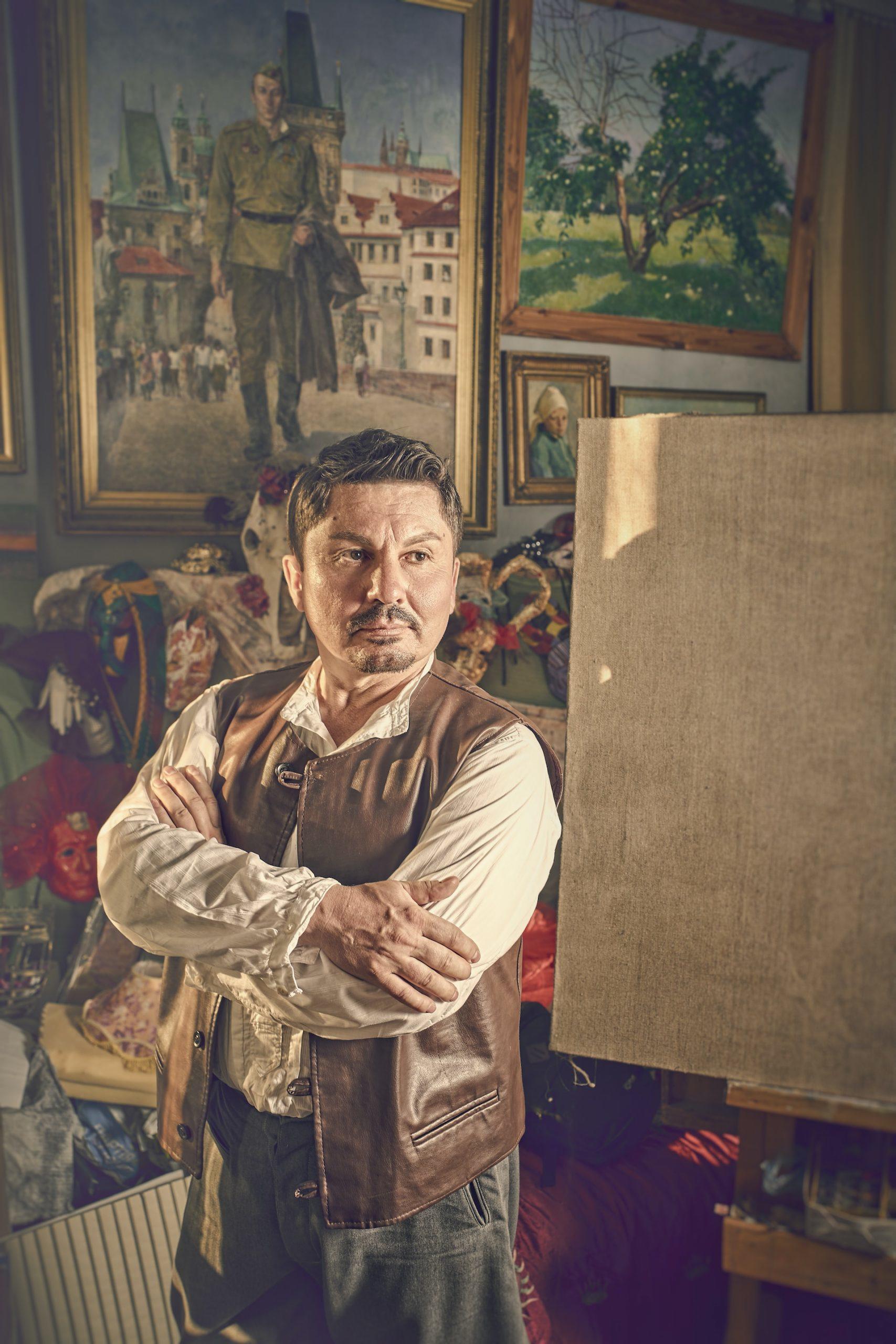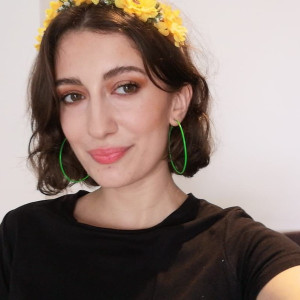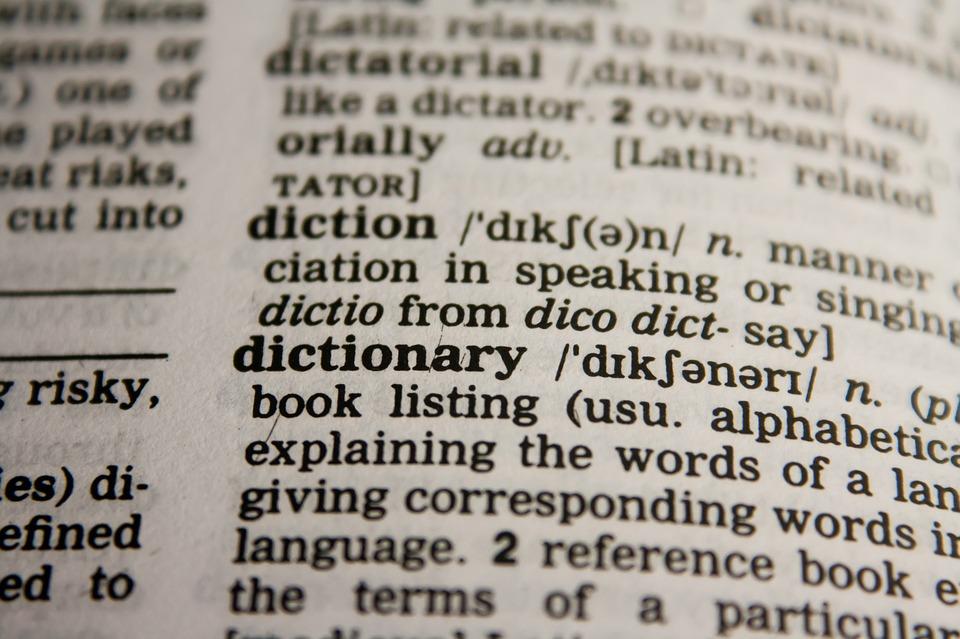Chapitres
L'utilisation de mots pour qualifier ou décrire une image est essentielle au quotidien. Découvrez dans cet article comment présenter un document de type image en langue anglaise.
C'est par ici 👇

Résumé des incontournables anglais pour présenter une image 👍
🎞️ Ce tableau présente neuf types de descriptions pour décrire une image en anglais, explique leur objectif, et fournit des exemples. Il offre une structure claire pour une description complète et détaillée.
| Type de Description | But | Exemple en Anglais |
|---|---|---|
| Identification (Identification) | Identifier l'image et fournir des informations contextuelles. | The image depicts a busy urban street in New York City. |
| Description Physique (Physical Description) | Décrire les éléments visuels présents dans l'image. | There are several tall buildings, people walking on the sidewalk, and yellow taxis. |
| Composition (Composition) | Expliquer comment les éléments visuels sont arrangés dans l'image. | The image is well-balanced with the central focus on the iconic skyline. |
| Point de Vue (Point of View) | Indiquer la perspective depuis laquelle l'image est prise. | The image offers a bird's-eye view of the cityscape. |
| Action et Interaction (Action and Interaction) | Découvrir des actions ou des interactions entre les éléments de l'image. | People are bustling about, and a cyclist is riding near the crosswalk. |
| Couleur et Contraste (Color and Contrast) | Mentionner les couleurs dominantes et les contrastes de lumière et d'ombre. | The image features a vibrant contrast between the blue sky and the yellow taxi cabs. |
| Taille et Echelle (Size and Scale) | Noter la taille relative des objets ou des personnes dans l'image. | The skyscrapers tower over the tiny figures of pedestrians on the street. |
| Temps et Météo (Time and Weather) | Spécifier le moment ou la saison et décrire les conditions météorologiques. | The image appears to be taken on a sunny afternoon in the summertime. |
| Impression Générale (Overall Impression) | Exprimer des impressions générales sur l'image, comme l'émotion ou l'impact. | The image evokes a sense of vitality and the bustling energy of city life. |
Comment aborder la description d'image 🤔

🌄 Une analyse d'image en anglais consiste à examiner en détail une image, qu'elle soit photographique, artistique, ou visuelle.
Elle vise à décortiquer les éléments visuels, à comprendre le contexte, à interpréter les symboles et les messages transmis, à discuter de la composition et de la signification, et à évoquer les émotions ou les idées qu'elle suscite.
🪩 Cette analyse permet de dévoiler les multiples facettes d'une image et d'enrichir la compréhension de son contenu et de son impact. Les principaux éléments d'analyse portent sur :
- La composition de l'image
- Sa taille et/ou sa grandeur
- Les couleurs et contrastes
- Les textures de l'oeuvre
📝 On vous donne les bons mots anglais pour débuter votre analyse, avec d'abord un petit récapitulatif général :
| Nom de l'Axe | But | Exemple en Anglais |
|---|---|---|
| Atmosphère et Émotions | Identifier les émotions évoquées | The image conveys a sense of tranquility. |
| Interpréter l'atmosphère générale | The overall mood of the image can be described as serene. | |
| Perspective ou Point de Vue | Comprendre la construction de l'image | The perspective of the image provides a view from a high vantage point. |
| Expliquer comment l'image influence la perception | The angle from which the image is captured offers a unique look at the subject. | |
| Symbolique ou Signification | Décrypter les messages cachés | Certain elements in the image may carry symbolic meaning. |
| Interpréter les significations allégoriques | The image may be interpreted as a metaphor for the passage of time. | |
| Contexte Historique ou Culturel | Comprendre l'influence de l'époque et de la culture | The image appears to be a reflection of the time period when the Art Nouveau movement was flourishing. |
| Identifier les éléments culturels distinctifs | Cultural references are evident in elements like the traditional attire and ceremonial objects. | |
| Impact sur le Public ou Réaction du Public | Évaluer l'influence émotionnelle | The image has the potential to evoke a range of emotions. |
| Stimuler la réflexion et la discussion | It's designed to provoke thought or discussion on topics like gender equality and empowerment. |
Composition de l'image
✍️ Lorsque vous parlez de la composition d'une image en anglais, il est essentiel de considérer comment les éléments visuels sont arrangés. Vous pouvez commencer par indiquer de quoi est composée l'image, tels que :
Les objets (mobilier, accessoires)
Les personnes
Le paysage
Mentionnez s'il existe une division claire entre différents éléments de l'image, et notez si la composition semble équilibrée ou déséquilibrée. Analysez comment les éléments sont organisés, car ils peuvent :
- Suivre un schéma symétrique, créant une sensation harmonieuse et ordonnée
- Ou être asymétriques, ajoutant de la tension et du dynamisme à l'image
Comprendre la composition aide à apprécier comment les éléments visuels interagissent et contribuent à l'impact global de l'image.
👉 Quelques exemples de phrases en anglais :
- The image is composed of a central figure surrounded by a chaotic crowd
- There's a clear division between the serene, focused subject and the frenetic background, creating a powerful sense of contrast
- The composition is intentionally unbalanced, with the central figure dominating the frame while the surrounding chaos adds depth and intensity
Taille et grandeur
Lorsque vous discutez de la taille ou de la grandeur d'une image en anglais, vous devez prendre en compte les éléments visuels et comment ils se comparent les uns aux autres. Vous pouvez commencer par noter que les objets varient en taille, certains étant plus petits ou plus grands que d'autres.
🪜 Mentionnez comment l'image donne une idée de l'échelle, que ce soit en montrant des éléments de référence ou en utilisant des repères visuels. Analysez les proportions des éléments par rapport au reste de l'image, et comment cela peut influencer la perception. Enfin, donnez une idée de la taille globale de l'image, si elle est petite et détaillée ou grande et panoramique.
👉 Voici des formules anglaises pour cela :
- The image shows a cityscape with buildings of varying heights. The objects vary in size, with some being towering skyscrapers and others smaller houses.
- The image gives a sense of scale by placing tiny cars on the streets, providing a reference point for the viewer
Couleurs et contrastes
🎨 Lorsque vous abordez les couleurs et les contrastes dans une image en anglais, vous examinez la palette de couleurs et comment la lumière et l'ombre sont utilisées. Commencez par identifier les couleurs prédominantes dans l'image, en notant si une couleur spécifique domine la scène.
💡 Analysez comment l'utilisation de la lumière et de l'ombre crée des contrastes, ajoutant de la profondeur et de la dimension à l'image. Observez si des couleurs vives ou ternes sont utilisées pour transmettre une atmosphère ou une émotion particulière. Enfin, examinez comment les couleurs évoquent des sensations, comme une chaleur réconfortante ou une froideur austère.
👍 Vous pouvez utiliser ces formules anglaises :
- The color palette is dominated by rich shades of blue, evoking a serene and calming atmosphere
- The use of light and shadow creates a sense of contrast, with the sunlight highlighting certain areas while casting deep shadows in others
- The vibrant colors of the flowers in the foreground contrast with the dull gray of the background, conveying a sense of vitality and life against a bleak setting
Texture et détails de l'oeuvre
🤓 Lorsque vous parlez de la texture et des détails d'une image en anglais, vous vous penchez sur la sensation tactile des surfaces et sur la minutie des éléments visuels. Pour commencer, notez si l'image est riche en texture, en décrivant comment les surfaces semblent au toucher. Examinez le niveau de détail dans l'image, en soulignant les aspects particulièrement saisissants. Enfin, révélez des détails complexes qui se révèlent lors d'un examen minutieux, comme des éléments subtils qui ajoutent de la profondeur et de l'intérêt.
🏡 Pour réussir votre analyse, utilisez :
- The image is rich in texture, with surfaces that appear rough and weathered, evoking a sense of history and age
- The level of detail is striking, especially in the intricate carvings on the ancient stone pillars
- The texture of the materials used is authentically represented, making the viewer feel as though they can reach out and touch the aged wood and worn stone
- Close examination reveals intricate details such as tiny hieroglyphs engraved into the stone, adding a layer of historical significance to the image
Les incontournables pour décrire le document iconographique 📸
Pour décrire une image en anglais de manière efficace, commencez par une introduction où vous présentez brièvement l'image. Décrivez ensuite les éléments visibles, en commençant par les aspects les plus saillants, puis en détaillant les caractéristiques plus spécifiques. Utilisez des connecteurs logiques pour guider la lecture, tels que "In the foreground," "In the center," "To the right," et ainsi de suite. N'oubliez pas de mentionner les émotions ou l'atmosphère que l'image évoque. Terminez par une conclusion pour résumer les points clés. Cette approche vous permettra de fournir une description complète et cohérente de l'image en anglais.

La nature du document
📰 Lorsque vous parlez de la nature du document en anglais, il est essentiel de spécifier quel type de document ou de support visuel est en question. Ensuite, vous pouvez identifier son origine pour donner du contexte.
- Photograph (Photographie):
- Format: Une photographie est une image capturée par un appareil photo.
- Expression en anglais : "Photograph" or "Photo."
- Painting (Peinture):
- Format: Une peinture est une œuvre d'art créée en appliquant de la peinture sur une surface.
- Expression en anglais : "Painting."
- Drawing (Dessin):
- Format: Un dessin est une représentation artistique réalisée avec des crayons, des stylos ou d'autres instruments de dessin.
- Expression en anglais : "Drawing."
- Sketch (Esquisse):
- Format: Une esquisse est un dessin rapide et non fini utilisé pour capturer des idées ou des concepts.
- Expression en anglais : "Sketch."
- Caricature (Caricature):
- Format: Une caricature est un dessin humoristique exagérant les traits d'une personne ou d'une chose.
- Expression en anglais : "Caricature."
- Comic Strip (Bande dessinée):
- Format: Une bande dessinée est une séquence de cases illustrées racontant une histoire.
- Expression en anglais : "Comic Strip."
- Advertisement (Publicité):
- Format: Une publicité est une image conçue pour promouvoir un produit, un service ou un événement.
- Expressions en anglais : "Advertisement," "Ad," or "Promo."
- Poster (Affiche):
- Format: Une affiche est une grande image imprimée affichée sur des panneaux publicitaires ou dans des espaces publics.
- Expression en anglais : "Poster."
- Chart (Graphique):
- Format: Un graphique est une représentation visuelle des données, comme un graphique à barres ou un graphique circulaire.
- Expression en anglais : "Chart" or "Graph."
- Map (Carte):
- Format: Une carte est une représentation graphique d'une région, d'un pays ou d'un lieu géographique.
- Expression en anglais : "Map."
🤳 Voici quelques exemples pour chaque élément mentionné dans la liste :
- This document is a photograph taken by a renowned photographer
- It's a drawing created by a talented artist
- The image is a cartoon drawn by a skilled cartoonist
- It's a comic strip from a popular comic book series
- This is an advertisement for a new product
- The chart displays statistical data from a recent survey
- The map shows the layout of the city
- It is an extract from a movie entitled 'City Lights,' directed by Charlie Chaplin and set in the 1930s
- The image was published in 'National Geographic' on April 15, 2022
- This poster is put on a hoarding in Times Square
- It's a diagram illustrating the water cycle
Le lieu ou la localisation
📍 Lorsque vous entrez dans l'analyse du lieu et de la localisation d'une image en anglais, il est impératif de préciser avec exactitude l'endroit où se déroule l'action ou la scène que l'image représente. Cette précision contextuelle est essentielle pour une interprétation approfondie de l'image.
🗣️ Voici quelques formules à utiliser pour cet objectif :
- In the foreground, you can see a bustling city street
- The scene takes place in a quaint little cafe
- The image is set against the backdrop of a tranquil beach at sunset
- The location appears to be a picturesque countryside with rolling hills and a quaint village
- The image presents a captivating scene, and to fully appreciate it, we must first delve into its setting and location
- To gain a comprehensive understanding of this image, it is essential to explore where and when the depicted scene is taking place
- The context and location of the scene depicted in the image play a pivotal role in interpreting its message and impact
Les actions et/ou interactions sur l'image
👯 Lorsqu'on examine les actions et les interactions dans une image en anglais, il est essentiel de décortiquer la dynamique entre les individus ou les éléments représentés. On peut commencer par décrire comment les personnes dans l'image semblent réagir ou ce qu'elles font.
Ensuite, on peut souligner toute interaction évidente entre les personnages ou les objets. Identifier l'action précise qui se déroule dans l'image est crucial pour comprendre son contenu et sa signification.
🎯 De plus, il est utile d'exprimer si l'action semble évoluer dans une certaine direction ou si elle est en suspens. Cette analyse des actions et interactions contribue à une compréhension plus profonde de l'histoire que l'image raconte et de la dynamique qui s'y joue.
- The individuals in the image seem to be engaged in a lively discussion, gesturing emphatically and leaning toward one another
- There is an apparent interaction between the children and the friendly dog, with the kids petting the dog and sharing smiles
- The action depicted is a passionate embrace between the reunited lovers, capturing a moment of intense emotion
- It appears as though the worker is diligently examining the intricate details of the delicate antique clock, delicately handling its gears
L'atmosphère et les émotions
🌦️ L'analyse de l'atmosphère et des émotions dans une image sert à décrypter comment cette dernière communique des sensations et des sentiments au spectateur. Elle permet de comprendre la résonance émotionnelle de l'image, en identifiant les émotions qu'elle cherche à susciter, que ce soit la joie, la tristesse, la tension, ou toute autre.
En engageant le spectateur sur un plan émotionnel, elle renforce l'impact de l'image et aide à contextualiser son contenu au sein d'un récit ou d'une communication visuelle. En fin de compte, l'analyse de l'atmosphère et des émotions contribue à une compréhension plus profonde et à une appréciation plus riche de l'image.
✅ Voici comment le décrire en anglais :
- The image of a mother cradling her newborn baby conveys a profound sense of warmth and tenderness, evoking feelings of love and happiness
- The misty forest shrouded in fog creates an eerie and mysterious atmosphere, suggesting an enigmatic and possibly foreboding setting
- The intense eye contact between the subject and the viewer in the portrait draws the audience into a deep emotional connection with the person depicted
- "In the advertising image for a luxury watch, the opulent background and the celebratory expressions on the models' faces communicate a sense of prestige and success, which aligns with the brand's message
Pour aller plus loin dans l'analyse d'image ✍️

Analyser le ressenti d'une image, en plus de ses caractéristiques, permet de comprendre sa signification profonde et son impact émotionnel. Cela révèle l'essence de l'œuvre, renforçant la connexion entre l'artiste, l'œuvre et le spectateur.
En combinant l'analyse esthétique et émotionnelle, on obtient une compréhension plus riche et nuancée de l'image, ce qui peut enrichir notre expérience et notre interprétation de l'art visuel.
Le ressenti ou l'impression générale
🤩L'analyse du ressenti dans une image est une étape cruciale pour en saisir la signification profonde et l'impact sur le spectateur. Cela permet de décrypter comment l'image communique des émotions, des atmosphères, et des réactions. Par exemple, l'image peut évoquer :
Un sentiment de tranquillité, de fébrilité, ou de chaos, en utilisant des éléments visuels et des couleurs spécifiques
Elle peut laisser une impression durable, marquer la mémoire du spectateur, ou susciter des réflexions profondes
🚩 Voici des exemples en anglais :
- The image conveys a sense of tranquility, with a serene landscape bathed in soft hues of blue and green
- It leaves a lasting impression of excitement, with vibrant colors and dynamic composition that evoke a sense of exhilaration
- The overall effect of the image is one of chaos, with a crowded city street captured in a frenzy of movement and energy
- It's a thought-provoking image that challenges preconceptions, inviting viewers to ponder its deeper meaning
- This joyful image of children playing in a sunlit meadow is an instant mood-lifter, spreading happiness and optimism
Le point de vue ou la perspective
🤓 L'analyse de la perspective ou du point de vue dans une image est essentielle pour comprendre comment le spectateur interagit avec la scène représentée. Elle offre des informations clés sur la manière dont l'image est construite et comment elle influence la perception. Par exemple, la perspective peut :
Offrir une vue d'ensemble depuis un certain point
Apporter une perspective unique sur la scène
Immerger le spectateur dans les détails
🔎 Voici des exemples en anglais :
- The perspective of the image provides a view from a high vantage point, giving the viewer a sweeping panorama of the cityscape below
- The angle from which the image is captured offers a unique look at the intricate details of the architectural ornamentation, highlighting the craftsmanship of the building
- The viewer is presented with a bird's-eye view of the bustling market, allowing them to observe the vibrant activity and the colorful stalls from above
Symboliques et significations
💫 L'analyse de la symbolique ou de la signification d'une image est fondamentale pour décrypter les messages cachés ou les significations plus profondes que l'image pourrait transmettre. Elle permet d'identifier des éléments symboliques, de déchiffrer les métaphores et d'explorer les thèmes sous-jacents. Voici des exemples en anglais :
- Certain elements in the image may carry symbolic meaning, such as the lone tree standing tall in the barren landscape, symbolizing resilience and solitude
- The image may be interpreted as a metaphor for the passage of time, with the wilting flower representing the transience of life
- The objects seem to allude to broader themes of environmental conservation, as the image features a juxtaposition of a pristine forest and an industrial wasteland
- The image elicits thoughts of symbolism and allegory in relation to the striking contrast between light and shadow, signifying the duality of human nature
Contextes historique et culturel
🏺 L'analyse du contexte historique ou culturel d'une image est essentielle pour comprendre comment celle-ci est influencée par les époques ou les références culturelles spécifiques. Elle permet d'identifier les éléments qui renvoient à des époques particulières ou à des aspects culturels distinctifs. Voici des exemples en anglais :
- The image appears to be a reflection of the time period when the Art Nouveau movement was flourishing, as seen in the ornate, flowing lines and floral motifs
- Cultural references are evident in elements like the traditional attire and ceremonial objects, which suggest a connection to indigenous rituals and customs
- The image resonates with historical events of the Great Depression, with the destitute individuals in the photograph symbolizing the hardships of that era
- It may be associated with a specific cultural or historical movement, as seen in the image's use of bold, geometric shapes and bright colors, reminiscent of the Pop Art movement of the 1960s
Impact sur le public et/ou réactions
💥 L'analyse de l'impact sur le public ou de la réaction du public à une image est cruciale pour comprendre comment l'image peut influencer les émotions et les perspectives des spectateurs. Elle permet d'explorer la gamme d'émotions et de réactions que l'image peut susciter, ainsi que son intention de stimuler la réflexion ou la discussion sur des sujets particuliers. Voici des exemples en anglais :
- The image has the potential to evoke a range of emotions, from profound sadness to deep admiration for the resilience of the depicted individuals
- Depending on the viewer's perspective, the image may elicit different reactions, such as empathy and a call to action from those concerned about environmental issues, while others may simply appreciate its aesthetic beauty
- It's designed to provoke thought and discussion on topics like gender equality and empowerment, with the image serving as a powerful visual statement
- The image is likely to have a profound impact on those who have experienced similar situations, as it may trigger memories and emotions related to their own experiences
Nos astuces pour bien décrire l'image 👌

Les mots de liaison en anglais
✍️ Pour rédiger votre note en anglais, voici des mots de liaison incontournables à utiliser pour structurer votre pensée :
| Utilisation | Connecteurs Logiques et Amorces | Exemples en Anglais |
|---|---|---|
| Introduction | To begin with, First of all, Let's start with... | To begin with, let's examine the foreground of the image. |
| In this picture, In the image, The photograph shows... | In this picture, we can see a serene mountain landscape. | |
| Décrire des Éléments | In the foreground, In the background, There is... | In the foreground, there is a colorful bouquet of flowers. |
| In the center, On the left, To the right... | In the center, we find the main subject of the image. | |
| Ajouter des Détails | Furthermore, Moreover, Additionally, Besides... | Furthermore, the image features intricate patterns on the fabric. |
| Not only... but also, In addition to... | Not only does the image capture the sunset, but it also showcases the reflection on the water. | |
| Comparer ou Contraster | Similarly, Likewise, On the other hand, In contrast... | Similarly, the colors of the sky and the ocean are harmonious. |
| While, Whereas, On the contrary... | While the sky is clear, the ocean's surface is turbulent. | |
| Évoquer des Émotions | It conveys a sense of... It evokes feelings of... | It conveys a sense of tranquility, with its soft colors. |
| The overall mood of the image is... | The overall mood of the image is one of serenity. | |
| Expliquer la Perspective | The perspective of the image provides a view from... | The perspective of the image provides a view from a bird's-eye angle. |
| The viewer is presented with a close-up perspective of... | The viewer is presented with a close-up perspective of the delicate flower. | |
| Analyser la Symbolique | Certain elements in the image may carry symbolic meaning, such as... | Certain elements in the image may carry symbolic meaning, such as the lone tree representing solitude. |
| The image may be interpreted as a metaphor for... | The image may be interpreted as a metaphor for the passage of time. | |
| Parler du Contexte Historique | The image appears to be a reflection of the time period when... | The image appears to be a reflection of the time period when Art Nouveau was flourishing. |
| It may be associated with a specific cultural or historical movement, as seen in... | It may be associated with a specific cultural or historical movement, as seen in its Pop Art elements. | |
| Analyser l'Impact sur le Public | Depending on the viewer's perspective, the image may elicit different reactions, such as... | Depending on the viewer's perspective, the image may elicit different reactions, such as empathy or aesthetic appreciation. |
| It's designed to provoke thought or discussion on topics like... | It's designed to provoke thought or discussion on topics like social justice. | |
| Conclusion | In conclusion, To sum up, Overall... | In conclusion, the image conveys a powerful message about the passage of time. |
Les verbes et noms de la description anglaise
| Verbe (Français) | Traduction en Anglais | Exemple en Anglais |
|---|---|---|
| Montrer | Show | The image shows a serene landscape. |
| Présenter | Present | The photograph presents a vibrant cityscape. |
| Dépeindre | Depict | The painting beautifully depicts a tranquil garden. |
| Capturer | Capture | The photo captures a candid moment of joy. |
| Mettre en évidence | Highlight | The image highlights the intricate details of the architecture. |
| Évoquer | Evoke | The colors evoke a sense of warmth and comfort. |
| Révéler | Reveal | The photograph reveals the hidden beauty of the sunset. |
| Suggérer | Suggest | The image suggests a connection between the subjects. |
| Exprimer | Express | The painting expresses a deep sense of melancholy. |
| Transmettre | Convey | The artwork conveys a feeling of serenity. |
| Évoquer des émotions | Elicit | The image elicits feelings of nostalgia and longing. |
| Inspirer | Inspire | The photograph inspires a sense of wonder and awe. |
| Créer une atmosphère | Create | The colors and lighting create an atmosphere of mystery. |
| Rendre | Render | The image renders a sense of tranquility. |
| Mettre en lumière | Spotlight | The composition spotlights the central subject. |
| Plonger | Immerse | The viewer is immersed in a world of vibrant colors. |
| Mettre en avant | Emphasize | The details are emphasized, enhancing the image. |
| Immerger | Submerge | The image submerges the viewer in a sea of emotions. |
| Susciter | Elicit | The artwork elicits a sense of reflection and contemplation. |























Si vous désirez une aide personnalisée, contactez dès maintenant l’un de nos professeurs !
Besoin d’aide particulier
Bonjour Djoumbi, vous allez surement trouver le meilleur prof pour vous sur notre plateforme :)
I appreciate the information provided,but I still wonder whether all pictures should be studied and what could be the objective of that rather dull activity?